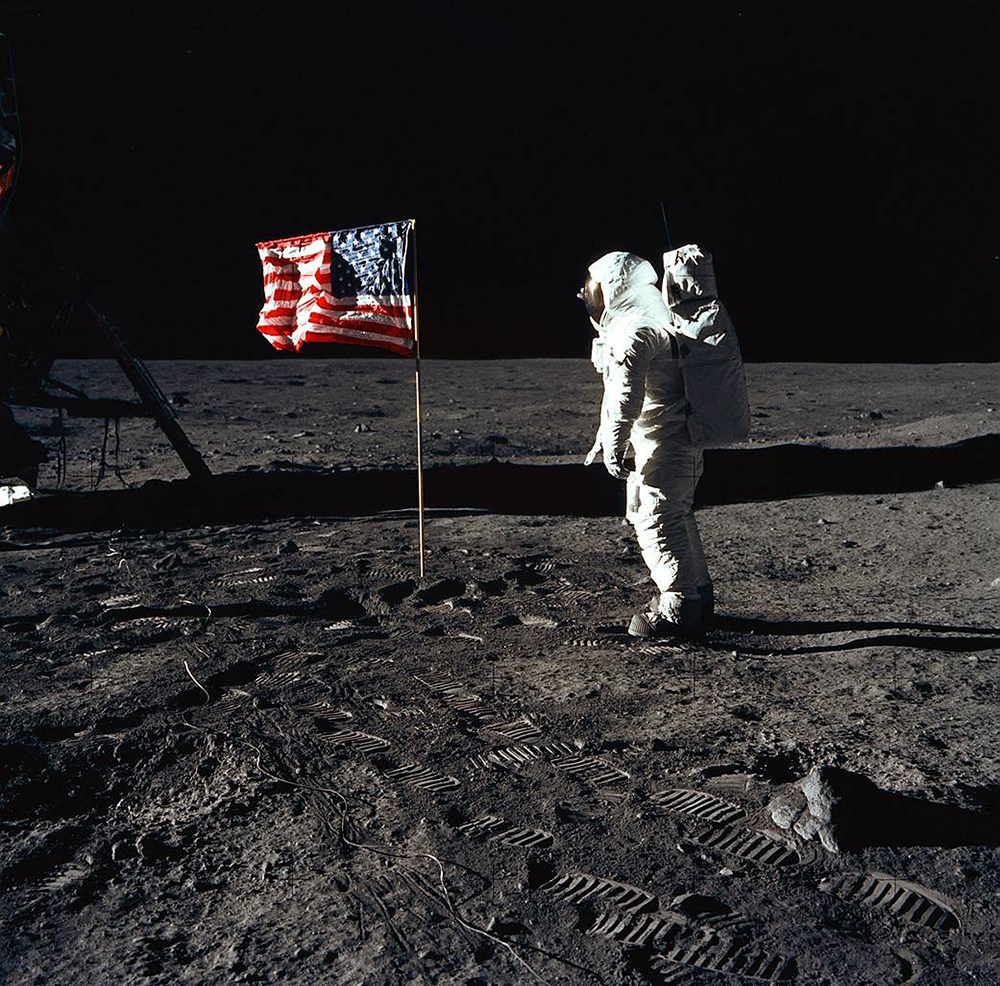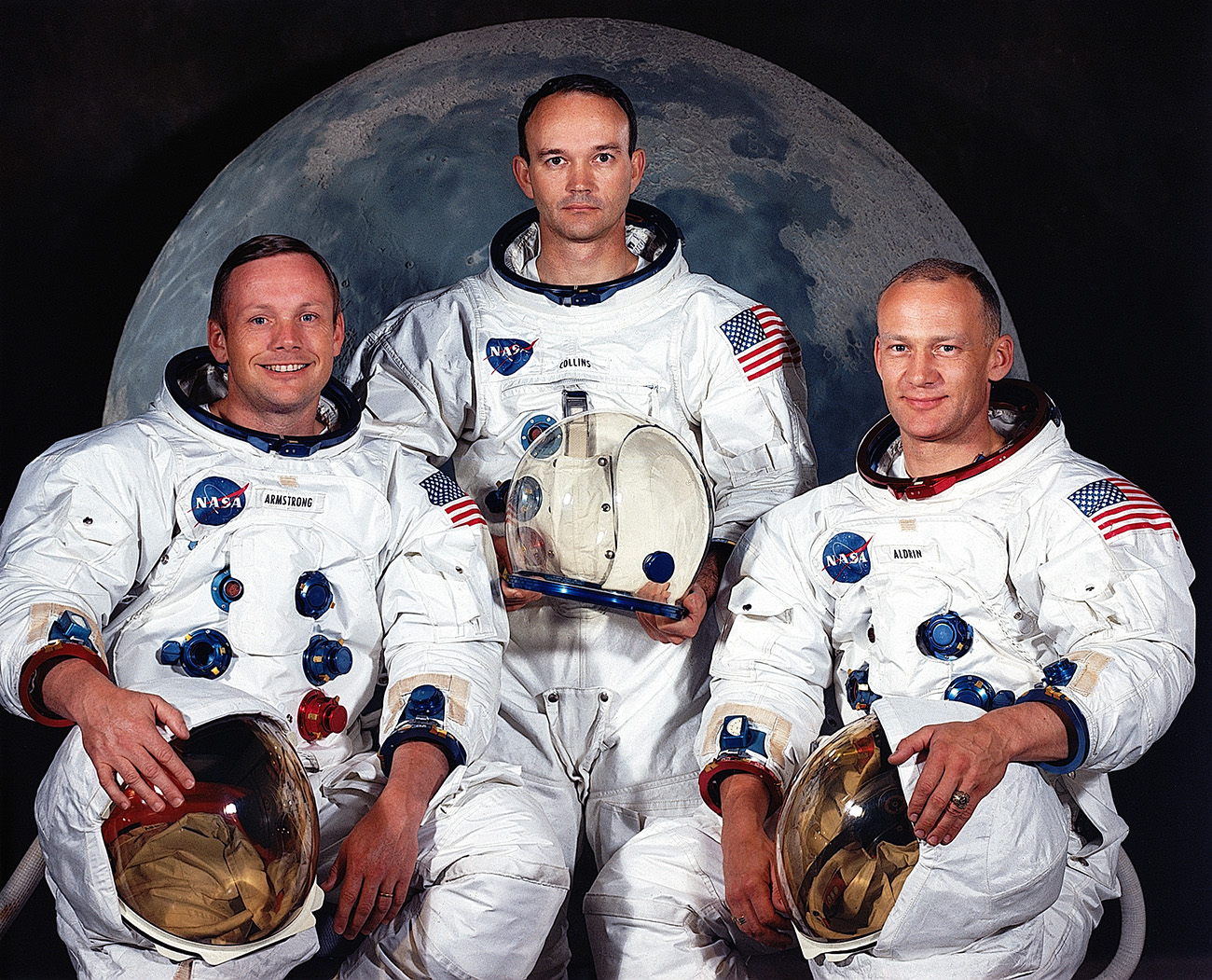It was July 20th, 1969, when humanity’s dream of setting foot on an alien world became a reality. The Moon gleamed like a distant pearl in the ink-black sky, and the entire planet held its collective breath. Neil Armstrong, strapped inside the lunar module, felt each heartbeat echo in the seemingly endless silence. The door opened, the ladder extended, and with a careful, deliberate movement, he descended.
“That’s one small step for man, one giant leap for mankind,” Armstrong spoke, his voice transmitting through the ages and etching itself into the annals of history. Dust puffed up under his boots, defying the stillness of the long-abandoned lunar surface. He wasn’t alone for long. Close behind him was Buzz Aldrin, his visor reflecting Armstrong and the stark landscape that stretched beneath billions of stars.

Apollo 11 launches from NASA’s Kennedy Space Center in Florida at
9:32 a.m. EDT, July 16, 1969. Aboard the Apollo 11 spacecraft were astronauts Neil A. Armstrong, commander; Michael Collins, command module pilot; and Buzz Aldrin Jr., lunar module pilot.
Apollo 11 was the United States’ first lunar landing mission. While Armstrong and Aldrin descended in the Lunar Module “Eagle” to explore the Sea of Tranquility region of the Moon, Collins remained in lunar orbit.
Image Credit: NASA
Neil and Buzz became pioneers of a new frontier, and unlike the old frontiersmen who ventured westward with horses and wagons, these men traveled through space—a void so vast it defied comprehension. They explored the Sea of Tranquility, planting the American flag, and collecting precious lunar rocks, souvenirs from a place few would ever touch, smell, or see in person.
Yet, they were not our only adventurers to leave footprints on the Moon’s dusty plains. Following the pioneering Apollo 11 mission, others came—each with their own story, their own small steps and giant leaps. Charles “Pete” Conrad and Alan L. Bean on Apollo 12 would follow. Conrad, with a chuckle, remarked, “Whoopee! That may have been a small one for Neil, but it’s a long one for me,” as he hopped onto the grey, powdery surface. They worked in the Ocean of Storms, their laughter and banter a testament to the human spirit in an inhuman world.

Apollo 14 saw Alan Shepard and Edgar Mitchell. Shepard, ever the maverick, would turn the scientific expedition into an impromptu golfing escapade, sending two golf balls sailing into the low gravity in an arc that would put even the most seasoned heroes of legend to shame. The Moon witnessed the athleticism and artistry of humankind juxtaposed against its silent, desolate grandeur.

AS11-40-5875 (20 July 1969) — Astronaut Edwin E. Aldrin Jr., lunar module pilot of the first lunar landing mission, poses for a photograph beside the deployed United States flag during an Apollo 11 extravehicular activity (EVA) on the lunar surface. The Lunar Module (LM) is on the left, and the footprints of the astronauts are clearly visible. NASA
Then came Apollo 15 with David Scott and James Irwin, who roved more expansively than their predecessors. Apollo 16’s John Young and Charles Duke followed them, bringing advanced equipment and leaving intricate trails of exploration across the lunar Highlands. Apollo 17’s Harrison Schmitt and Eugene Cernan were the last, their footprints the final human marks for decades to come. Cernan’s parting words, “We leave as we came and, God willing, as we shall return, with peace and hope for all mankind,” echoed with a mix of pride and yearning, a promise etched into eternity.

Aldrin Jr., lunar module pilot. NASA
These men carried with them the dreams and ambitions of not just a nation but of Earth. They broadcasted their experiences back to an audience that spanned the globe, connecting us all, if only for a moment, in wonder and awe. They transformed the Moon from a distant celestial body into a tangible part of our human story. Where once we gazed skyward with myths and legends, now we look at memories and footnotes of history.

Astronaut John W. Young, commander of the Apollo 16 lunar landing mission, leaps from the lunar surface as he salutes the United States flag at the Descartes landing site during the first Apollo 16 spacewalk. NASA
Their journeys were more than scientific triumphs; they were a testament to what humanity can achieve. They became storytellers of a new era, narrators of the cosmic fable that began with curiosity and courage. And as we look up at the Moon today, we see more than a sphere of rock—we see a testament to the resilience and ingenuity of the human spirit. They walked so we could dream, and perhaps, one day, we will follow in their footsteps, venturing farther into the mysteries of space, guided by the echoes of their legendary journeys.












